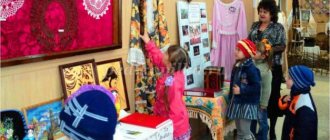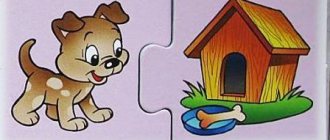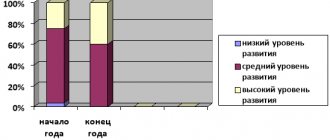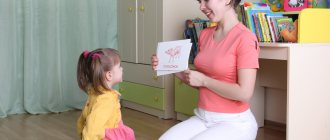The sound culture of speech is established during the period when a child learns to speak. At the age of three to seven years, children master pronunciation, intensively fill their vocabulary, discover the grammatical structure of speech, and learn to speak coherently. For each child, these processes are accompanied by unequal success. If speech disorders are not eliminated in childhood, then in subsequent years it is much more difficult to overcome them.
The concept of sound culture of speech
Speech is a complex function that involves many parts of the body. The development of speech in preschool children involves not only direct “speaking” and comprehension of what is being said. What sound production and pronunciation will be depends on how developed the speech apparatus is and how the respiratory muscles work.
Accordingly, the sound culture of speech is a multifaceted concept, including pure pronunciation, sound characteristics, speech breathing, meaningfulness of statements, and general expressiveness of speech.
Speech hearing is closely related to the work of the articulatory apparatus and respiratory muscles. Children with impaired hearing - or simply absent-minded and inattentive - find it difficult to catch and reproduce complex sounds, to ensure meaningful, expressive speech. Therefore, when talking about the education of sound culture, they necessarily include the development of speech hearing.
Organization of educational activities with preschoolers to develop the sound culture of speech
Bibliographic description:
Ryadinskaya, N.V. Organization of educational activities with preschoolers for the development of sound culture of speech / N.V. Ryadinskaya, N.N. Kravchenko. — Text: direct // Questions of preschool pedagogy. - 2022. - No. 10 (27). — P. 8-10. — URL: https://moluch.ru/th/1/archive/145/4614/ (access date: 01/18/2022).
One of the key tasks of preschool educational institutions is the socialization of pupils, that is, integration into the social environment. During integration into the world of society, “patterns of behavior, social norms and values necessary for successful functioning in a given society” are acquired [3]. Life in society cannot be imagined without communication, and communication cannot be imagined without language.
Language is closely related to speech, since “speech is always language in action” [6, p.4]. The concepts of “speech” and “language” are associated with the term “speech culture” - a concept that combines mastery of the linguistic norms of oral and written language, as well as “the ability to use expressive language means in different communication conditions” [10].
Mastering the culture of speech, expressed in correct speech, is one of the main indicators of a child’s readiness for school. It is necessary to form a child’s speech culture from an early age, at least in middle preschool age (4–5 years).
An important part of the general speech culture is the sound culture of speech, which covers all aspects of the sound design of words and sounding speech in general: correct articulation of sounds and words, volume and speed of speech utterance, rhythm, pauses, timbre, logical stress, expressiveness. The normal functioning of the speech motor and auditory apparatus, the presence of a complete speech environment are essential conditions for the timely and correct formation of speech sound culture [4].
A low level of sound culture of a child’s speech can have negative consequences in the form of personality changes (irritability, isolation, decreased motivation for cognition and learning). Mental retardation may also develop, which often results in problems with learning at school, poor academic performance, and more complex socialization in the society of peers and adults [8].
Nurturing the sound culture of speech involves working on the following aspects: pronunciation, compliance with the requirements of orthoepy (norms of literary pronunciation), expressiveness and diction of speech (clear, intelligible pronunciation of each sound and word separately, as well as phrases as a whole) [2].
When organizing educational activities in the field of development of speech sound culture, the following points must be taken into account:
- a differentiated approach to organizing classes depending on the age of preschool children;
- the relationship and interaction of special classes (frontal) with work carried out outside classes [1, p.26];
- special attention to articulatory gymnastics;
- use of gaming technologies;
- use of IR technologies.
- A differentiated approach to organizing educational activities depending on the age of preschool children
Joint educational activities with younger preschoolers should take place in the form of didactic games with toys, the purpose of the classes is to practice onomatopoeia. At first, students should practice choral responses, since they are not yet able to listen to each other’s responses. In the middle group, it is worth moving on to simple explanations of the articulation of sounds, setting learning tasks (learning to pronounce a specific sound), which increases the consciousness of the students’ actions, which is also facilitated by the motivational factor (explanation of why they need to learn the sound). In addition to correct sound pronunciation, other aspects of the sound culture of speech are also being developed: education of clear and correct articulation, long, smooth speech exhalation, development of voice volume, development of speech hearing. At this stage, it is necessary to work on the development of phonemic hearing and diction, for which a variety of word games, tongue twisters, tongue twisters, riddles, nursery rhymes, prose and poetic works are used.
For older preschoolers, the main task is to practice sound. The most productive technique is to demonstrate the articulation of a sound, accompanied by an explanation of the position of the organs of articulation, followed by exercises in pronouncing the sound in isolation and in combination with other sounds. Work on sound differentiation is carried out in three stages: differentiation of isolated sounds, sounds in words and sounds of phrasal speech. An important point when organizing classes with older preschoolers is the use of various teaching techniques with repeated repetition of the same type of speech material with a variety of teaching techniques [1].
- The relationship and interaction of special classes (frontal) with work done outside of class
For the timely and productive development of a child’s speech, including its sound side, it is necessary to conduct specially organized - frontal - classes, at least 1-2 times a month. But it is also important to include separate exercises for practicing sounds, clarity of speech, speed, smoothness, and expressiveness in other classes, including music ones, in agreement with the music director.
- Articulation gymnastics
The development of human speech depends on many subjective and objective factors, but as far as the sound side is concerned, the most significant factor here is the work of the articulatory apparatus, the development and improvement of which is facilitated by the use of articulatory gymnastics. The goal of articulatory gymnastics is to develop correct, complete movements and certain positions of the articulatory organs necessary for the correct pronunciation of sounds, and to combine simple movements into complex ones.
1) Statistical - related to maintaining a certain articulatory posture.
2) Dynamic - requiring repeated repetition of the same type of movements[5].
The basic principles of organizing articulatory gymnastics: regularity (daily, several times a day), from simple to complex, individual approach, use of the game method and clarity. It is important to properly organize the space for the lesson - the child must sit, see the adult’s face and his own, for which a wall or hand mirror is needed. Thanks to articulatory gymnastics, the muscular system of the speech apparatus and the mobility of its elements are strengthened, and the tension of the articulatory organs is reduced.
- Use of gaming technologies
When organizing educational activities aimed at developing the sound culture of speech, it is advisable to use various pedagogical games - didactic, theatrical, finger games.
A didactic game is the main type of game and is a verbose, complex, pedagogical phenomenon. There are the following types of didactic games: games with objects (toys); printed board games; word games.
However, most problems of speech development in general and speech sound culture in particular can be solved using theatrical games. When playing a role, the child uses means of verbal and non-verbal expressiveness chosen independently. Dramatization can take place in the form of simulation games (characters, social roles, animals), performances, and improvisation games. Pupils can act as not only artists, but also directors and screenwriters, acting out stories with the help of toys (or their substitutes). Voicing the story being played out contributes to the development of expressive speech. Motor activity during speech activity (reading and learning poems, nursery rhymes, jokes) makes children’s speech more rhythmic, loud, clear and emotional. When reciting a poem, children imitate the plot using words, facial expressions, and gestures [7].
An excellent technique for developing speech is writing - syncwine (compiling five lines) and fairy tale therapy. Games with tongue twisters and pure tongue twisters - “say it softer, louder, scared, joyful” - also have a positive effect on the sound culture of a child’s speech, developing intonation and a sense of rhythm. The game form of conducting classes is always productive and attractive for children. A variety of games allow you to solve a variety of problems without causing boredom or indifference.
5.Use of IR technologies
It is impossible to imagine the modern education system without the use of information and communication technologies, which imply the use of various information and technical means. The main objectives of using such technologies in educational activities are the creation of interactive models and facilitating interaction with parents of pupils and informing them about methods and means of speech development of children.
The following ICTs can be used in the educational activities of preschool educational institutions: multimedia educational programs (the “Speech Development” program, the speech therapy interactive complex “Teremok”, etc.), educational programs on disks, thematic multimedia products prepared by educators (using PowerPoint, Moovly programs etc.).
For example, the Speech Development program is aimed at developing children's auditory perception; formation of skills in sound analysis and synthesis, correct pronunciation of sounds, syllables, words, skills in composing descriptive stories from pictures and speaking coherently [9].
The use of ICT allows for the best visibility (the picture can be accompanied by sound and animation); solves situational problems (creating a media product for a specific purpose or situation, taking into account the level of development of specific students). Elements of a unified information and educational environment in a preschool educational institution make it possible to work on speech development not only in a group, but also individually, and also provide means for children’s independent play activities.
Literature:
- Arkhipova E. G. Organization of work on the education of sound culture of speech in preschoolers // Problems of pedagogy, 2015. No. 6(7). pp. 24–27.
- Afonina L. G. The concept of sound culture of speech and its significance for the development of the personality of a preschooler in the conditions of the Federal State Educational Standard of Education // Scientific research and modern education: VI International. scientific-practical conference. (Cheboksary, March 15, 2019), Cheboksary, 2022. pp. 41–42.
- Glossary of Political Psychology. M.: RUDN, 2003. - P. 268.
- Maksakov A.I. Education of sound culture of speech in preschool children. A manual for teachers of preschool institutions. 2nd ed. M.: Mozaika-Sintez, 2005. - 64 p.
- Romantsova I. O. Articulatory gymnastics as a means of developing the sound culture of speech // Formation of psychology and pedagogy as interdisciplinary sciences: international. scientific-practical conf. (Glazov, March 14-April 15, 2016). Glazov, 2022. pp. 102–104.
- Rymar, S.V. Russian language and speech culture: lecture notes for students for all areas of training / S.V. Rymar. - Murom: Publishing house - printing center MI VlSU, 2011. - 98 p.
- Sibgatova V. D. Effective gaming technologies in the development of speech of preschool children: from work experience // Internationalscientificreview, 2019. No. 1(41). P.29–31.
- Ushakova A. A., Shalina A. A. Formation of sound culture of speech of preschoolers // Speech culture in different spheres of communication: XII All-Russian scientific-practical. conf. (Nizhny Tagil, November 29, 2017), Nizhny Tagil, 2022, pp. 124–129.
- Filippova L.V. The importance of information and communication technologies in the process of forming the sound culture of speech of children of senior preschool age // Federal State Educational Standards: experience of implementation and analysis of development results: All-Russian. scientific-practical conf. (Arzamas, May 24, 2018). Arzamas, 2022. pp. 217–223.
- Current problems of speech culture (collection). M., 1970.
Key terms
(automatically generated)
: sound culture of speech, articulatory gymnastics, educational activities, sound, game, age of preschoolers, sound culture of child speech, sound side, organization of classes, correct pronunciation of sounds.
Features of the formation of sound culture of speech of preschool children
A child’s speech is formed based on the example of verbal communication of the adults who surround him. For some parents and grandparents, it becomes a discovery that even with a baby it is inadmissible to lisp and adapt to baby talk. From the first days of life, children should hear gentle, but at the same time correct speech in terms of grammar and pronunciation. Only in this way will the development of coherent speech in preschool children occur naturally and fully.
Starting from the age of three, a preschooler will begin to repeat after adults word by word. It is extremely important that his onomatopoeia is based on distinct, correctly pronounced phrases.
Sound pronunciation
The sound aspect of speech in preschool children changes every month due to the natural improvement of the speech apparatus.
Children 3-4 years old have a characteristic speech feature that consists in softening almost all words. Most children do not yet pronounce the sound R, hissing Zh, Ch, Sh, Shch.
There is a frequent replacement of more complex sounds (so-called back-lingual) with simple (front-lingual) at the beginning of a word. Follow the movement of your tongue: it is much easier to pronounce “shuk” instead of beetle, “dolova” rather than head, “Tatya” instead of Katya.
Several consonant sounds in a row completely turn children’s phrases into new lexical inventions.
By the age of five, most children get rid of general softening. The pronunciation of words is still unstable, but almost all sounds are being mastered. Another thing is that the child does not always manage to use them appropriately. To rejoice that R, Zh and other insidious sounds have already succumbed, the preschooler uses them, replacing the quite loyal pronunciation L, T, S. For this reason, you can hear from the child “rapka” (paw), “zhuby” (teeth) and similar word creation.
Children of senior preschool age, in general, pronounce all sounds clearly, unless there are functional deviations (lisp, stuttering), the elimination of which requires special speech therapy assistance. But in six-year-olds, the rearrangement of sounds or syllables, as well as the distortion of words familiar to the immediate circle (“meat grinder”, “velisaped”) can become fixed. The reason may be either imitation, undeveloped speech hearing, or weak voluntary attention.
We recommend that you read:
- How to teach a child to pronounce the letter R.
- Speech therapy exercises for the sound L.
- Making whistling sounds.
Characteristics of speech expressiveness
The formation of sound expressiveness of speech occurs when the preschooler’s statements acquire coherence. Children grasp the melody of pronunciation of sentences before they begin to speak. Intonation, logical stress in a sentence comes when the child begins to speak meaningfully.
Elements of speech expressiveness are an important component of sound culture. Intonation and clarity of pronunciation not only add beauty to the sound. The delivery of the meaning of the message and the understanding of the content by the listener depend on them. The development of expressive speech in children can be ensured by reciting poetry and participating in theatrical performances.
Pace and speech breathing
The peculiarities of assimilation of the sound side of speech by preschoolers are also due to the fact that the child’s body has a poorly developed system of respiratory muscles and respiratory tract.
Therefore, the child may not finish words, skip complex sound combinations, and speak excessively hastily. At the same time, speech sounds excited or loud.
It is important to develop your child's breathing muscles by practicing deep inhalations and exhalations.
Exercises where you have to blow for as long as possible are useful. Blowing soap bubbles, blowing on a dandelion ball, or a competition to see who can blow a checker further on a chessboard are suitable. Such simple games develop the speech breathing of a preschooler.
Education of sound culture of speech in preschool children
What kind of speech a preschooler will have depends to a large extent on the attentive attitude of parents and educators to this issue. A culture of speech must be instilled and nurtured.
The first thing that adults need to observe is to set an example for the child with their competent speech and culture of verbal communication.
Secondly, parents are obliged to closely monitor their child’s progress in mastering their native language. What is important here is not being touched by children's pronunciation, but careful tips on how to use words correctly, an incentive to formulate a narrative sentence. It is necessary to systematically train in the pronunciation of difficult sounds in order to prevent possible speech disorders.
Formation of correct pronunciation
Parents should focus on age-related norms for the formation of pure pronunciation. Having passed the 5-year mark, the child must learn to pronounce all sounds. Already approaching this age, adults need to stimulate the development of their auditory attention as a preventive measure for possible speech problems in their child. This can be done everywhere in a playful way:
- Invite your child to close his eyes and listen to the sounds around him. Then ask what he heard.
- Practice telling fairy tales together, imitating the voices of fairy-tale characters.
- Learn to isolate sounds in a word: an adult names words, and a preschooler determines whether it contains a designated sound.
It is also easy to perform articulation gymnastics. Such tongue exercises as “Spatula”, “Needle”, “Slide”, “Clock”, “Horse” are known to everyone. These articulatory movements are simple to perform, but their effectiveness has been proven by many years of practice.
Diction and expressiveness training
The formation of diction and expressiveness is effectively promoted by memorizing and reciting small, entertaining poems. Children love funny rhyming lines. These are accessible and simple techniques for developing speech in children 3-4 years old. Kids recite poems with inspiration, trying to repeat all the accents they heard in their mother or grandmother’s recitation. Moreover, children's quatrains often include simultaneously narrative, interrogative and incentive sentences. As in this example:
In addition to training intonation expressiveness, such recitations are a fertile environment for automating sounds that are difficult for a preschooler.
Theatrical activities, which are easy to organize at home, also contribute to the development of speech expressiveness. Children love to listen to their favorite fairy tales almost every day. They know the content exactly and carefully ensure that the narrator does not miss any episodes.
It's time to assign the preschooler one of the roles that is attractive to him. Even without additional guidance, the child will try to portray the character of the hero, using the appropriate tempo and tone of speech.
Forms, methods and techniques of work to educate the sound culture of speech
Topic: Forms, methods and techniques of work to educate the sound culture of speech
The concept of sound culture of speech
Each language is characterized by one or another system of sounds. Therefore, the sound side of each language has its own characteristics and distinctive qualities. The sound side of the Russian language is characterized by the melodiousness of vowel sounds, the softness of the pronunciation of many consonants, and the originality of the pronunciation of each consonant sound. The emotionality and generosity of the native language are expressed in the richness of intonation.
Sound culture of speech - includes phonetic and orthoepic correctness of speech, its expressiveness and clear diction.
Education of sound culture involves:
1. formation of correct sound pronunciation and word pronunciation, which requires the development of speech hearing, speech breathing, and motor skills of the articulatory apparatus;
2. education of spelling-correct speech - the ability to speak according to the norms of literary pronunciation. Orthoepy includes not only pronunciation, but also stress, i.e. a specific phenomenon of oral speech.
3. formation of speech expressiveness - mastery of the means of speech expressiveness presupposes the ability to use the height and strength of the voice, the tempo and rhythm of speech, pauses, and various intonations. It has been noticed that in everyday communication the child has natural expressiveness of speech, but needs to learn voluntary, conscious expressiveness when reading poetry, retelling, and storytelling;
4. development of diction - clear, intelligible pronunciation of each sound and word separately, as well as the phrase as a whole;
5. fostering a culture of verbal communication as part of etiquette.
In the sound culture of speech, there are two sections: the culture of speech pronunciation and speech hearing. Therefore, work should be carried out in two directions:
1. development of the speech-motor apparatus (articulatory apparatus, vocal apparatus, speech breathing) and on this basis the formation of the pronunciation of sounds, words, clear articulation;
2. development of speech perception (auditory attention, speech hearing, the main components of which are phonemic hearing).
Forms of work to educate the sound culture of speech
The “Sound Culture” section of speech includes the following: developing in children attention to the sound side of audible speech, auditory memory, improving general speech skills: learning a leisurely pace of speech, correct speech breathing, maintaining the necessary rhythm when speaking, working on the voice, being able to lower and raise your voice. It is also necessary to improve the pronunciation of words that are complex in their structure, in accordance with the rules of orthoepy, observing the correct stress, and strive to clearly pronounce the sounds of the native language.
Work on the sound culture of speech also includes distinguishing by ear similar sounds, often mixed by children: S - Sh; L – R; W – F; Z – F; NW; P – B; T – D, etc., try to pronounce these sounds correctly in words, phrases, phrases, tongue twisters and poems. If such violations are permanent, you need to contact a speech therapist.
The formation of the sound side of speech is carried out in a kindergarten in two forms: in the form of training in class and outside class.
The main role in teaching belongs to special classes that combine pronunciation demonstrations with active exercise for children. Classes are complemented and interact with special exercises outside of class.
The leading form of training is collective frontal forms of work (rather than individual) classes with children. The team is a strong factor of mutual influence for children. In group activities, work productivity increases and fatigue decreases.
In addition, individual exercises are included in other classes on speech development, as well as in music, gymnastics and outdoor games. The number of classes is determined by the level of children's speech development.
Weekly work in speech classes, taking from 2 to 10 minutes. Once a month, you can conduct a comprehensive lesson entirely devoted to the sound culture of speech. Such classes are especially needed in the second junior group, where the amount of work on sound pronunciation is very large. Most of the time in such a lesson is devoted to working on the pronunciation of one sound or a group of related sounds (in the older group - differentiation of pairs of sounds that are similar in acoustic characteristics: z - zh, s - s', etc.) The rest of the time is devoted to cultivating other qualities of speech (two -three).
Other forms of frontal work that are carried out outside of class are of great importance: dramatization games, round dances, holidays and entertainment.
It is also widely practiced to work with subgroups of children at a time convenient for the teacher (didactic games, jokes, etc.). Thus, the calendar plan provides for work on the sound culture of speech almost every day.
During classes, during walks, during routine processes, it is necessary to very carefully monitor the children’s speech and ensure that it is clear, precise and intelligible. In the formation of correct sound pronunciation, timely training, based on the age characteristics of children, plays a decisive role.
The greatest effect is achieved by training that began at earlier stages of preschool childhood. The age of children at the start of training is a more important factor than the duration of training itself.
Methods and techniques for developing correct sound pronunciation
What methods are typical for educating the sound culture of speech?
The work is carried out using didactic games, game exercises with the inclusion of speech material: tongue twisters, sayings, nursery rhymes, poems, proverbs, riddles, stories in accordance with the program content in the native language. It is good to use speech with movement in this work. Such exercises activate the process of developing pronunciation skills.
It is advisable to introduce preschoolers to the sounds of speech in a playful way, associating each sound with a specific symbol (“Z” is the song of a mosquito, “R” is the operation of an airplane engine, “Sh” is air coming out of a burst balloon).
Such aids help to effectively prepare children with speech development problems to master writing and reading.
Games developed with symbols in which sounds are automated and differentiated are useful for children. In addition, visual symbols develop memory, attention, and imagination.
Didactic stories that include educational tasks for children are very useful (repeat words with difficult sounds, change the pitch of the voice, etc.). In junior and middle groups, they are often accompanied by a display of pictures on a flannelograph or a demonstration of toys. On the teacher’s table, you can use toys to stage a performance, during which the educational material is repeated (sound combinations, simple sayings, songs).
To develop the expressiveness of speech, classes in retelling and memorizing poems are effective. Individual elements of intonation (prosodemes), speech hearing and breathing are also practiced using the method of exercises: memorizing and repeating familiar tongue twisters, the game exercise “Let’s blow on the fluff”, etc.
Using these methods, the teacher uses a variety of techniques that directly affect the pronunciation side of children’s speech.
The leading technique is the example of correct pronunciation and task completion given by the teacher. If a teacher uses a model at the initial stage of teaching, then he often reinforces this technique with a brief or detailed explanation of the demonstrated qualities of speech or movements of the speech-motor apparatus (“You, children, hear that I don’t just say a word with the sound r, but I specifically highlight this sound, I pronounce it long, drawn out: a-r-r-r-buzz..."). When developing phonemic hearing, sound and word pronunciation, a specific technique is recommended - exaggerated (with emphasized diction) pronunciation or intonation of a sound (a stressed syllable, a part of a word distorted by children).
A technique such as justifying the need to complete the teacher’s assignment improves the quality of answers. It is given either in an emotional and humorous form (“Let’s teach the turkey to sing a funny song!”), or in a businesslike form (“We must firmly, firmly remember how to pronounce the word shofe-e-er, chauffeurs, otherwise speaking is simply illiterate, ugly - who wants to get into a funny situation?”).
Related to this is another technique - individual motivation for the task, an individual instruction before the child’s answer (“It seems to me that Seryozha’s lullaby will work especially well - he knows how to be affectionate and caring”).
In case of erroneous answers, such active techniques based on imitation as joint (conjugate) speech of the child and the teacher, as well as reflected speech (immediate repetition by the child of a sample speech) are possible.
In the process of practicing and consolidating a child’s pronunciation skills, an example of the correct speech of his peers is valuable. This factor should be used not only in classes, but also in freely organized games and exercises, in which both children who have not mastered some skill and those who speak correctly and clearly are involved.
Traditional techniques include evaluating a response or action and correcting it. Teachers should be warned against the annoying, too frequent use of corrections and hints (sound pronunciation, tempo, etc.), as this irritates the child. During classes, such a specific technique can be used - a figurative physical education pause, which, thanks to the combination of children’s movements with the utterance of practiced sounds or sound combinations (game situation), serves at the same time as relaxation and consolidation of educational material (leave from the tables, walk around, sit down and show like chickens clucking).
In the process of working on the sound culture of speech, visual techniques are also appropriate - showing articulatory movements, demonstrating a toy or picture. Games and exercises often involve additional equipment - a “magic” wand for signaling the beginning or end of an answer, chips and other handouts that serve to indicate the sound structure of a word.
Thus, the work of educating the sound culture of speech is a whole system carried out from the first days of a child’s stay in kindergarten. Without the special attention of adults, the development of the sound side of children's speech is delayed, and negative speech habits may develop that are very difficult to overcome.






